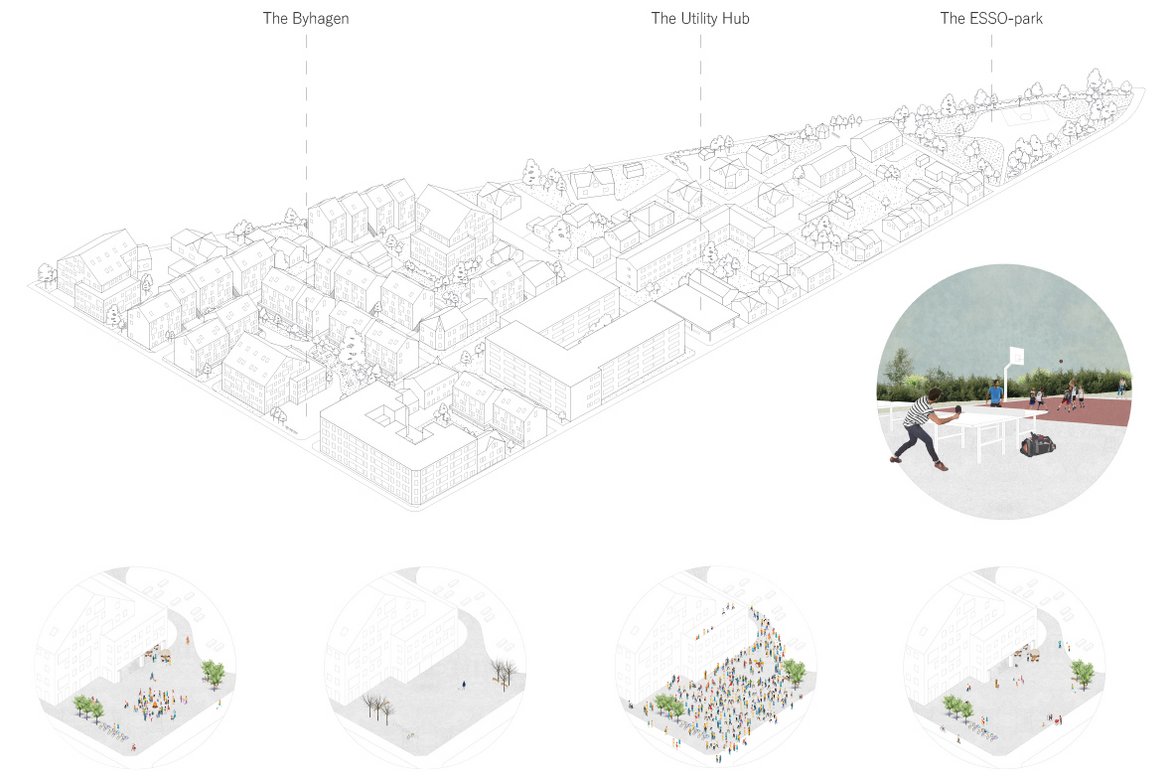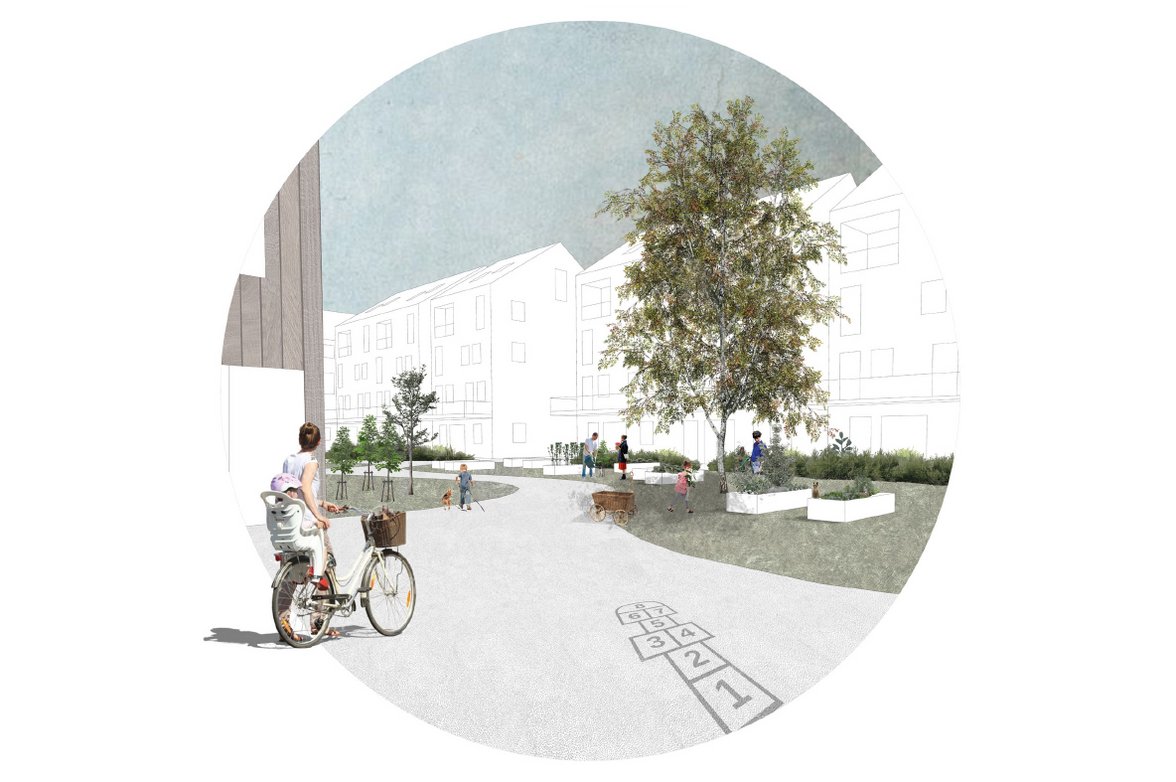Togethere - Transformation without Gentrification
freie Masterthesis (SS19)
Verfasserin: Emilie Andreassen
During the last decade, the city of Sarpsborg has gone through many changes. In preparation for the 1000 years anniversary of 2016, the city center and other important historical places were upgraded and beautified. The event mustered engagement among the citizens, and there was a blooming of social initiatives and new events such as the Christmas market and the Sarpsborg
music festival. The anniversary seemed to strengthen the sense of identity in the city. However, parallel to this development was a development that went in the opposite direction. Instead of continuing the development in the city center, more and more shopping and trade was established along the highways. This happened as shops and services in the city center closed due to unprofitability. Several large housing areas have been established throughout the recent years, both within and outside of the city center. This in itself is positive, but the building complexes have little or no emphasis on continuing the local architectonic expression. Many of the new housing blocks in the city center were not integrated well or support city life. The InterCity project is the next important change in Sarpsborg, and my motivation for this project is my worries for how it will be handled in terms of urban planning. I believe that it is
crucial for a fruitful and sustainable development to put emphasis on the identity of the city and on supporting city life. My goal with this project is to develop a concept for development in the city center in accordance with the identity and sustainability of the city as well as the social, economic and environmental needs and wishes of the residents. I wish to achieve an understanding of and insight in the practice of urban planning in the municipality of Sarpsborg and to explore models and strategies for affordable housing in Norwegian cities. During the process of achieving this goal, I have collected information and knowledge from
mappings, observations and literature. From conversations with urban and social planners, voluntary organizations and residents, I have learned about the different aspects and complexity of urban planning. In this text, I document and discuss my findings and present strategies and theories that are the basis of my design concept. In the chapters in The Concept, I show how my design answers to various challenges through means of architecture and urban planning.




